The self balancing electric skateboard as we now affectionally refer to as “Onewheel” has made massive leaps in performance gains. The world of personal transportation has seen remarkable innovations over the years and one of the most notable being the self-balancing skateboard. This journey of innovation traces back to 2007, with a significant milestone marked by Ben Smither’s pioneering video on a self-balancing skateboard prototype. This post explores how Smither’s early vision laid the groundwork for the evolution of Onewheel, leading up to the advanced GT and GT S-Series models.
The Early Days – Ben Smither’s Vision
In 2007, Ben Smither introduced a concept that would revolutionize personal transportation – a self-balancing skateboard. His video showcased a prototype that, although rudimentary, demonstrated the potential of single-wheel transportation. Smither’s design, featuring gyroscopic technology and a unique balancing mechanism, captured the imagination of tech enthusiasts and paved the way for future innovations.
While the credit of the invention of Onewheel goes to Kyle Dorkenson who brought this product to market in 2014, This video is evidence that the concepts of a self-balancing skateboard powered by battery were in the works as far back as 2007.
In the video, the focus is on assembling and fine-tuning the self-balancing skateboard. Its beginnings were very DIY. You can hear Ben speak about the “blocks control,” Which now is known as the controller (the brain of the Onewheel), which includes a gyro and two accelerometers, essential for maintaining balance.
They also mention control buttons for adjusting the angle and a main power switch, highlighting the intricate electronic components involved. The dialogue moves to the importance of batteries and their role in powering the device. He even mentions purchasing parts from eBay. Clearly, the beginnings were very DIY. The platform and the components (controller, battery, motor, wheel), maintain to be relatively similar to the latest rendition of the Onewheel today.
Onewheel V1 – Kyle Dorkenson’s Creation – 2014
Inspired by Smither’s prototype, the first official Onewheel model, the V1, was introduced by Kyle Dorkenson, bringing the concept of a self-balancing board to a broader audience. The V1 was a leap forward, integrating more sophisticated gyroscopic sensors and a robust motor, offering riders an unparalleled experience of fluid motion and freedom.
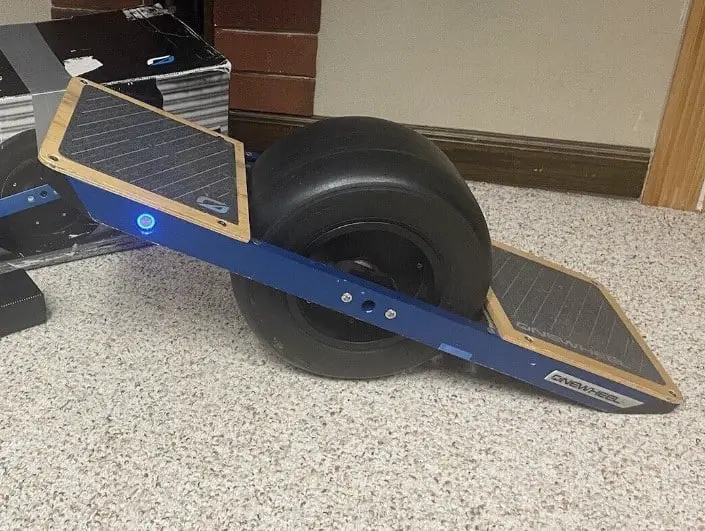
Prior to the V1, the engagement of the motor solely relied on a button on the foot pad. With the V1, the sensor was more intuitively integrated which really placed Onewheel into a marketable PEV.
With a top speed of only 12 mph (19km) and a range of up to 6 miles (9.6km). The V1 was really marketed as a city riding PEV.
Advancements and Improvements – Onewheel Plus and XR – 2017-2022
The journey continued with the Onewheel Plus and XR models, each iteration bringing significant improvements. The Plus model boasted enhanced motor power and smoother ride dynamics, while the XR kept the same build but pushed boundaries with extended range and improved battery life, making longer rides and trail riding possible.

Both the Plus and XR received a top speed increase to 19 mph (30 kph), but it was really the XR that started making trail riding on a Onewheel possible. The range dramatically increased from 5 to 7 miles on plus to 10-12 mi on the XR
In the XR, the batteries changed to an NMC lithium ion instead of the LiFePO4 which are found on the V1 and Plus. The LiFePO4 are lower energy density compared to NMC so for the same weight or volume, the LiFePO4 batteries store less energy. NMC batteries are higher density which allow for more ranged packed into a battery pack.
Plus and XR – Same But Different
It was a great move that Future Motion kept the same build platform for the XR to improve on their design. This allowed aftermarket companies to continue to cultivate products around a familiar platform. The XR platform still remains heavily used board due to its lighter build (in comparison to the GT – 8 lbs lighter) and can often be seen as the platform for many DIY VESC builds due to its large aftermarket.
Modified Onewheels with Chi-Batteries and JWBatteries (CBXR & JWXR)
Using larger lithium-ion battery packs, Chi-Batteries and JWBatteries offered larger 567Wh battery packs (in comparison to the 324Wh battery packs that were available on the XR Onewheel). This was a 75% range improvement on these boards and they warranted their own prestige with the “CBXR” and “JWXR” moniker. To date, these boards offer reported ranges that out perform the GT.
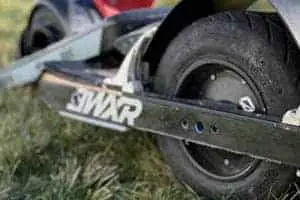
I mention these boards because while they were modified Onewheels, they really forced the hand of Future Motion to create a board with a larger battery. These boards were the first true trail board that elevated the trail riding experience. Aftermarket companies really started to explode during these models which really fueled putting Onewheels on the map.
Digital Shaping 2.0
With the Plus XR, Digital Shaping 2.0 was launch. It was also the first time riders could create custom shaping modes for their ride. Prior to this, the rider only had the ability to select a few presets. These present digital shaping are still in use to date with later versions of the Onewheel App however it was at this point where tweaking your settings was possible.
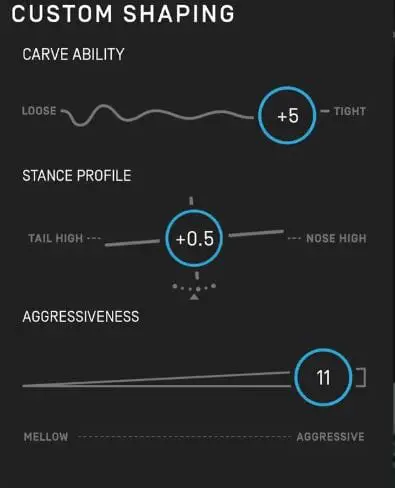
Carve-ability, aggressiveness and stance profile were the limits to the ride adjustments that riders could make however these three elements could dramatically morph the feel of the ride to something tight to very loose.
Custom Shaping would be seen again in Digital Shaping 3.0 with added features however this was the first time riders had the ability to modify the controller of the Onewheel.
Pint-sized Onewheels – Pint and Pint X
In 2019, Future Motion released the Onewheel Pint which provided a more affordable price point into the Onewheel market while also revamping their single-wheeled creation. While no Onewheel is waterproof, the water resistance had improved notably with this version Onewheel.
The Pint – labeled due to its smaller platform, shortened the overall length by 3″ (7.6cm) from the XR and a 0.5 in (1.3cm) in width, it also came with improved housing, composite components and offered a more polished looking board. Up to this point, many boards had a mix of skateboard-decking aluminum and plastics that yielded a more DIY-looking Onewheel. Many riders still affectionally prefer this DIY look however Future Motion added more than aesthetics to the Pint.
With Pint, added features such as indicator and sensor lights are apparent however gaskets to controller and battery boxes and better seals around power connections were also improved. The internals such as the controller and battery do differ but the most notable changes are to the more rounded design of the board. No wooden components come on the Pint. Its all composite plastics and aluminum.

Future Motion incorporated a mag handle that they would carry into their GT build. The Pint was marketed as the coffee-getter board so its likely the rationale the handle was added.
The smaller platform also allowed for a lighter board (23 lbs) shaving 4 pounds from the XR making it easier to carry in and out of stores.
Pint X For Range
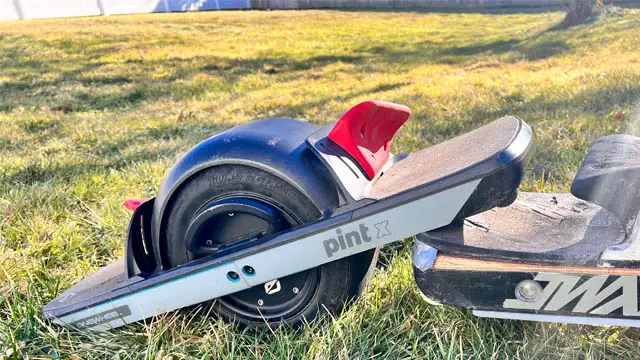
The Pint X (PX) adds the weight back on to 27lbs in added battery weight. Much of the limitations of an original Pint is the range which is 6 to 8 mi (10-12.8 km). With Pint X (PX), the range was dramatically increased to 12-18 mi (19-29 km)
The Pint X (PX) offers to-date as a great middle of the road board for someone who prefers the smaller Pint-size platform yet wants the range of an XR. The Pint X flaw however presented as a huge problem on this platform. With such a large battery into a small battery housing, the wires are prone for crimping which caused issues. With this corrected however, this board is a solid trail board for lighter riders or for those who want to save a couple hundred dollars and ride this over the GT.
The Latest Innovations – Onewheel GT and GT S-Series
With range being a major consideration especially for trail riders and also likely due to the massive number of riders modifying their XR Onewheels with extended batteries, the Onewheel GT hit the market in late 2021 with a complete revamp of their flagship board. Future Motion essentially took their Pint design and expanded it into a full sized board.
Onewheel GT – Overthrowing the XR’s Flagship Status
Replacing the XR as the new flagship board. The GT was a complete game changer to the sport. This was the first Onewheel that offered a treaded tire directly from Future Motion. Unfortunately however Future Motion deviated from the standard 6″ hub which is a common go-kart size into their own proprietary sizing at 6.5″
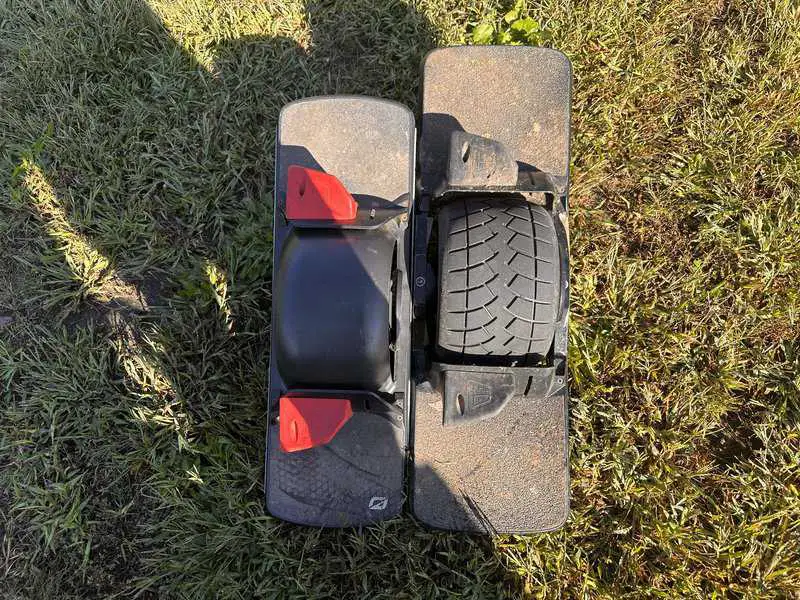
The 6.5″ hub made for a rougher ride however it comes standard with concave foot pads which makes the ride more manageable. The GT packs a massive 525Wh 75V battery pack which can compete with modified XR Onewheels.
With a half inch added width and added weight in battery and components, the GT (to date) is the heaviest Onewheel. It rests at a whopping 8lbs over the XR weighing in at 35lbs (16kg). This was a trade off for range and power over the XR which is a worthy concession to make in the trail riding game as the GT boasts with an impressive 20-32 miles (30-52 km) range. While slightly below modified boards, the GT offers a higher voltage output over the XR (75V vs 63V) and had a more refined build offering new features that were only on the Pint such as SimpleStop, LED indicator while also adding more features such as dimmable headlights.
With the same water resistant design of the Pint, the GT also offered improved lighting (500 lumen headlights) and Digital Shaping 3.0 (released in late 2023). Digital Shaping 3.0 gave the community what they expected. With the XR, riders had custom shaping and now that Digital Shaping 3.0 is available, the custom shaping was taken to a whole new level.
Prior to 3.0, riders only had the ability to manipulate the “Carve-ability”, “Aggressiveness” and “Stance profile” but with Digital shaping 3.0, there are advanced settings that allow for more refinements. Digital Shaping 3.0 allows for changes to the following attributes while still making the app very user friendly.
- Stance Profile
- Braking Aggressiveness
- Aggressiveness Profile:
- Dynamic Responsiveness
- Turn Compensation and Roll
- Jump Re-engagement
- Zone Engagement
GT S-Series (GTS)
With VESC builds becoming more popular and pre-built open-source boards like the Floatwheel ADV, Future Motion remained determined to keep the sport progressing. In late 2023, the GT S-Series (more commonly referred to as the GTS) hit the market with a battery arranged in series allowing for incredible voltage output.
The GTS is Future Motion’s racing board, technically a trim of the GT model. In a similar fashion to the evolution from the Onewheel Plus to the XR, Future Motion retained the same platform for the GTS, with the exception of the charging port and performance internals. This was a strategic move, as it allowed for compatibility with a wide range of aftermarket products, which is one of the aspects that makes owning a Onewheel so enjoyable. Continuing with this design philosophy ensures that the GTS not only advances in performance but also remains a highly customizable and fun product for enthusiasts.
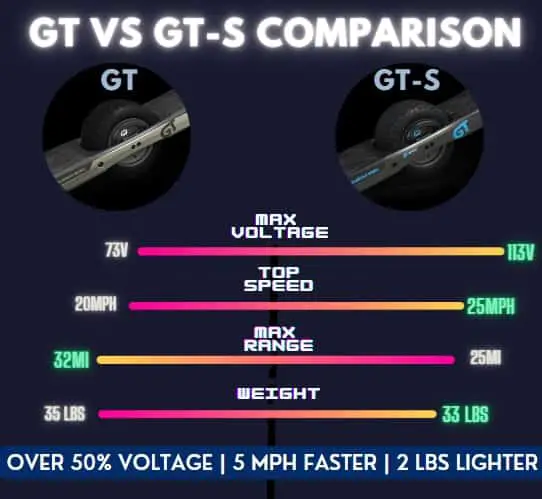
A Whopping 113V output, 25 mph (advertised) top speed and 2 pounds lighter than the GT, the only draw back from this board compared to the GT is the slight concession in range.
While no Onewheel is waterproof, the GT and Pint line are the latest and are the most resistant to water exposure. There is no worry riding in damp or wet conditions (you just dont want to immerse the board).
The journey of Onewheel, from the original visionary prototype by Ben Smither to the advanced GT and GTS series, represents more than just technological progress. It’s a chronicle of the sport’s ongoing evolution. As these boards develop, tackling steep hills and rugged terrain becomes increasingly effortless, making this an exhilarating field to be part of. The possibilities seem boundless, and the anticipation for future innovations is palpable.
Join the Community
We encourage you to showcase your custom builds and share your perspectives on the Onewheel’s evolution. The community is not just witnessing the evolution of the boards but is also expanding rapidly. Now is an exciting time to dive into the world of Onewheel Personal Electric Vehicles.”
